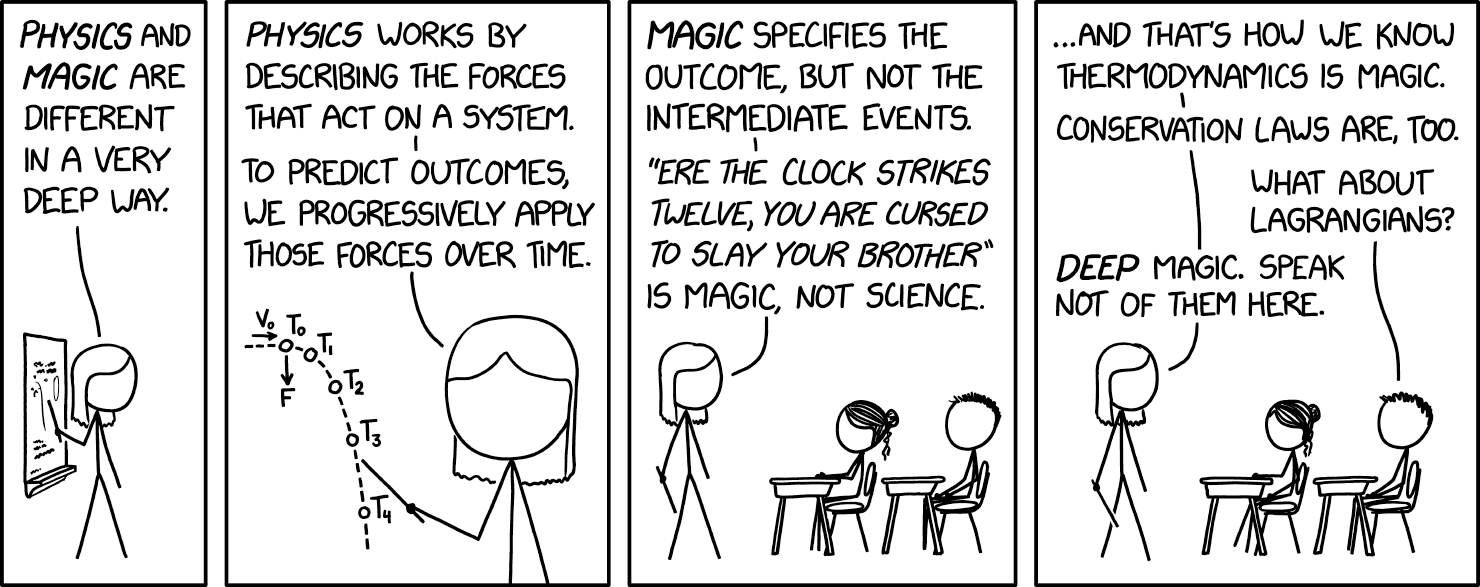this post was submitted on 09 Mar 2024
563 points (98.8% liked)
xkcd
10962 readers
371 users here now
A community for a webcomic of romance, sarcasm, math, and language.
founded 2 years ago
MODERATORS
you are viewing a single comment's thread
view the rest of the comments
view the rest of the comments

Sadly a lot of math heavy textbooks love to present the equations and how to use them, but do a poor job explaining how those equations came to be.
This was one of my biggest issues with math myself. Sin, cos, tan, and logarithms still confuse me. Meanwhile, derivatives (a calculus concept) are pretty straightforward conceptually with the physics examples of distance, speed, and acceleration.
Derivatives are the change in something. So if you have a graph of something's distance over time, the derivative is a graph of the change in distance at any given moment, or the speed of the object. Likewise, the derivative of the object's speed is a graph of the object's acceleration, or the change in the object's speed at any given moment.
Anyway, this is also something that I used to rant about with my programming courses in college. You need an understanding of both the concept and the execution of it in order to program with a consistent amount of success, but most courses (and learning material) focus on one or the other.
I do systems admin/engineering, and I'm the team code monkey, but my co-workers want to learn. It's still the core hurdle I see my them make when they try to script. They either have the concept down with no clue how to script it, or they're flailing script snippets around without actually understanding what those parts actually do.
Imagine taking a line and rolling it around a circle so that it's always touching. Like a wheel on a flat surface, but from the wheel's perspective.
Sine and cosine are the X and Y coordinates of the intersection point, and tangent is the slope of the line.
You can also relate it back to acoustics!
Woah